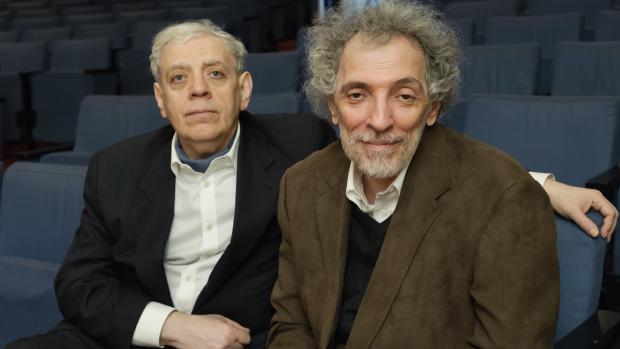500 Years of Melancholia Conference: More Magic, Less Square

It would be easy to picture Carlotta Mummolo and Angelo Tafuni outdoors on a beautiful Spring afternoon, enjoying a picnic or some equally picturesque pursuit. Instead, the two PhD students were two of over 150 attendees at Pfizer Auditorium on May 17, listening to several highly regarded mathematicians, who had gathered to celebrate the 500th anniversary of the iconic mathematics-filled etching Melancolia I by Albrecht Dürer and to explore some of the great mathematical achievements of the late 20th and early 21st centuries. “We have been looking forward to this conference since it was announced,” Tafuni explained. “As students of mechanical and aerospace engineering, we naturally use mathematics every day, so the topic is of great interest to us.”
Mummolo, Tafuni, and the more than 150 other attendees got to hear talks by John Conway of Princeton University, who taught the audience how to create their own magic squares (grids in in which every row, column, and diagonal add up to the same number); Jeffrey Lagarias of the University of Michigan, who discussed polyhedra and the shadows cast by those intriguing shapes; and Richard Stanley of the Massachusetts Institute of Technology, who introduced the non-mathematicians in the audience to the difficult-to-say word “syzygy.” (Other speakers included Günter M. Ziegler, who had traveled all the way from the Free University of Berlin, Sergiu Klainerman of Princeton University, John W. Morgan of Stony Brook University, and Richard Schroeppe of Sandia National Lab.)
Among the non-mathematicians in the rapt audience was Miriam Helbok, a biographer by trade, who has written about Conway and other mathematicians. "I greatly enjoyed glimpsing the fascination that contemporary mathematicians still have with integers and magic squares—topics that similarly fascinated their predecessors beginning many centuries ago," she said.
That link between centuries is also a source of wonder for Tom Morgan, a visiting research scientist who works closely with David and Gregory Chudnovsky of the School of Engineering’s Institute for Mathematics and Advanced Supercomputing (IMAS), who spearheaded the conference. “Just think,” he said enthusiastically. “The mathematical elements that Dürer included in his etching—the magic square and the polyhedron—are still being studied today and inspire just as much interest and focus. His works retains enormous relevance in both the areas of mathematics and art.”
Ophelia Morris, who teaches physics and chemistry at the Excelsior Preparatory High School in Queens, brought more than a dozen of her students to the conference and was excited to show them that link between art and the sciences. “This type of event can open their eyes to the possibilities out there,” she said. “With women so underrepresented in the STEM fields, it’s particularly important for my female students to be exposed to this kind of thinking.” One of her students, Jenine Frederick, confirmed that the conference was an eye-opener, saying, “I might not understand every word, because it’s very high-level mathematics being discussed, but it does make it easier to imagine pursuing this one day.”
With the help of the 3D printers at Brooklyn-based company MakerBot, Morgan had made a model of Dürer’s polyhedron, which attendees lined up to sign, as a lasting souvenir of the conference. Reflecting on the importance of the event, David Chudnovsky, one of its organizers, asserted, “Even here, with all the experts in this room, with a subject this enigmatic, we are all really students. Perhaps we will uncover today even more that we don’t know—some unknown unknown.”




